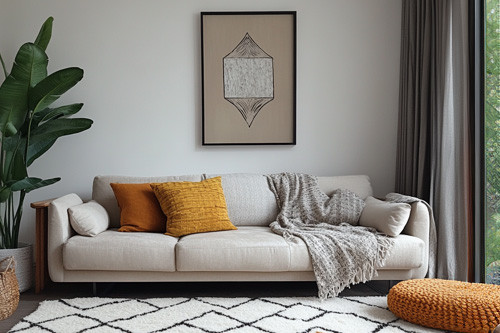What to Know Before You Purchase a Berber Rug
Posted by The London Cows Team on 12th Oct 2024
Berber rugs are renowned for their unique aesthetic appeal, durability, and versatility. Originating from the Berber tribes of North Africa, these rugs have gained global popularity due to their intricate designs and functional benefits. In this guide, we delve into essential considerations to keep in mind before making a purchase, ensuring that your investment is not only beautiful but also practical and long-lasting.
Understanding Berber Rugs
Berber rugs are traditionally woven by hand, employing techniques that have been passed down through generations. They are typically made from wool, though variations exist in synthetic fibres. Wool Berber rugs are particularly valued for their natural resilience and insulating properties, making them ideal for both warmth and comfort.
Types of Berber Rugs
When considering a Berber rug, it's crucial to understand the different types available:
- Wool Berber Rugs: These are made from high-quality wool, providing a plush feel and exceptional durability. They resist stains and are easy to clean, making them suitable for high-traffic areas.
- Synthetic Berber Rugs: Often more affordable, synthetic options such as nylon or polyester can mimic the appearance of wool while offering benefits like fade resistance and easy maintenance.
- Cotton Berber Rugs: Though less common, cotton Berber rugs are lightweight and breathable, suitable for areas with less foot traffic.
Key Considerations Before Purchasing
1. Purpose and Location
Before selecting a Berber rug, determine its intended purpose and location within your home. For instance, a rug for a living room should balance aesthetic appeal with durability, while one for a bedroom might prioritise softness and comfort. Consider the following:
- High-Traffic Areas: Opt for wool or synthetic fibres that can withstand wear and tear.
- Low-Traffic Areas: A softer, more delicate option may be appropriate for spaces with minimal foot traffic.
2. Size and Dimensions
The size of the rug is vital to its overall impact within a room. Measure the space accurately, considering both the area and furniture layout. Common sizes include:
- Small Rugs: Ideal for accenting smaller areas or used as a layering piece.
- Medium Rugs: Versatile enough for most living areas, allowing furniture to sit on the rug for a cohesive look.
- Large Rugs: Create a focal point in open spaces, accommodating larger furniture arrangements.
3. Design and Colour
Berber rugs are available in various designs, from simple monochromatic patterns to intricate geometric motifs. When choosing a design, consider:
- Room Aesthetics: Ensure the rug complements existing decor and colour schemes. A neutral tone can provide versatility, while bold patterns can serve as a statement piece.
- Style Harmony: Consider whether your home embodies a modern, traditional, or bohemian style, and select a rug that harmonises with these elements.
Maintenance and Care
1. Cleaning Requirements
Understanding the maintenance of your chosen rug will ensure its longevity. Wool Berber rugs require regular vacuuming to prevent dirt build-up. For synthetic options, spot cleaning is usually sufficient. Consider professional cleaning every few years for deep-seated dirt and stains.
2. Stain Resistance
Wool inherently resists stains due to its natural oils, making it a practical choice for homes with pets or children. However, synthetic Berber rugs can also offer stain-resistant treatments, enhancing their durability.
Budget Considerations
1. Price Range
Berber rugs can vary significantly in price, depending on factors such as material, size, and craftsmanship. Wool rugs tend to be more expensive due to their quality and durability. It's essential to establish a budget that aligns with your needs while also considering the long-term value of the rug.
2. Quality Indicators
When evaluating potential purchases, look for signs of quality, such as:
- Dense Weave: A tighter weave often indicates a more durable rug.
- Natural Fibres: Wool and cotton options tend to offer better longevity compared to lower-quality synthetics.
Where to Purchase
1. Reputable Retailers
Buying from established retailers ensures a level of quality and customer service. Research options that specialise in rugs or home decor to find a selection that meets your aesthetic and functional needs.
2. Online vs. In-Store
Consider the pros and cons of purchasing online versus in-store. While online shopping offers convenience and often a wider selection, visiting a store allows you to experience the rug's texture and colour first-hand.
Final Thoughts
Investing in a Berber rug can elevate the ambiance of any space while providing functionality and comfort. By considering your specific needs regarding purpose, size, design, maintenance, and budget, you can make an informed decision that enhances your home for years to come. Choose wisely, and enjoy the timeless beauty and durability of a Berber rug.

